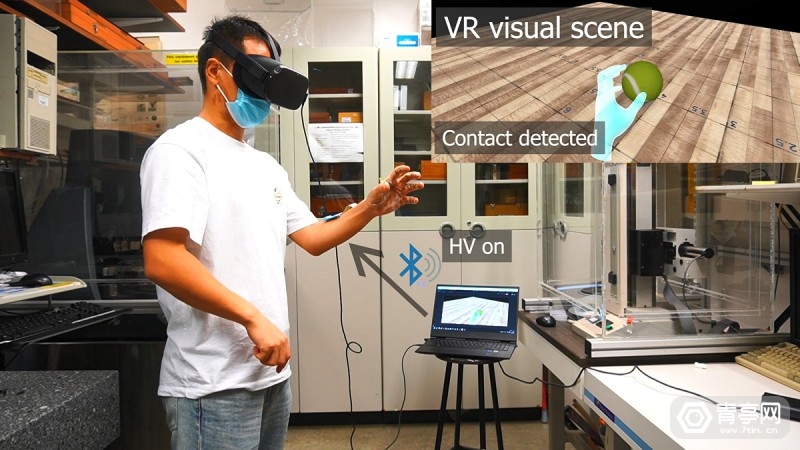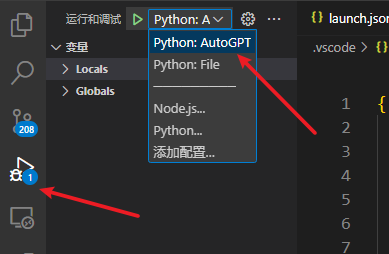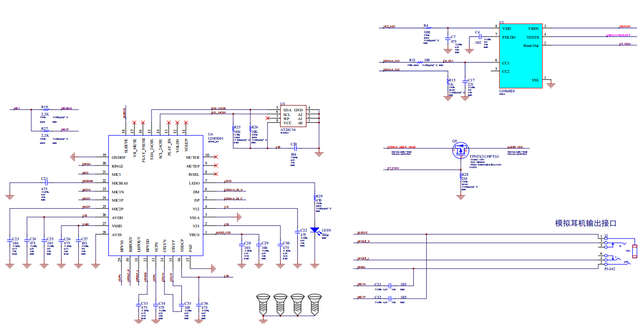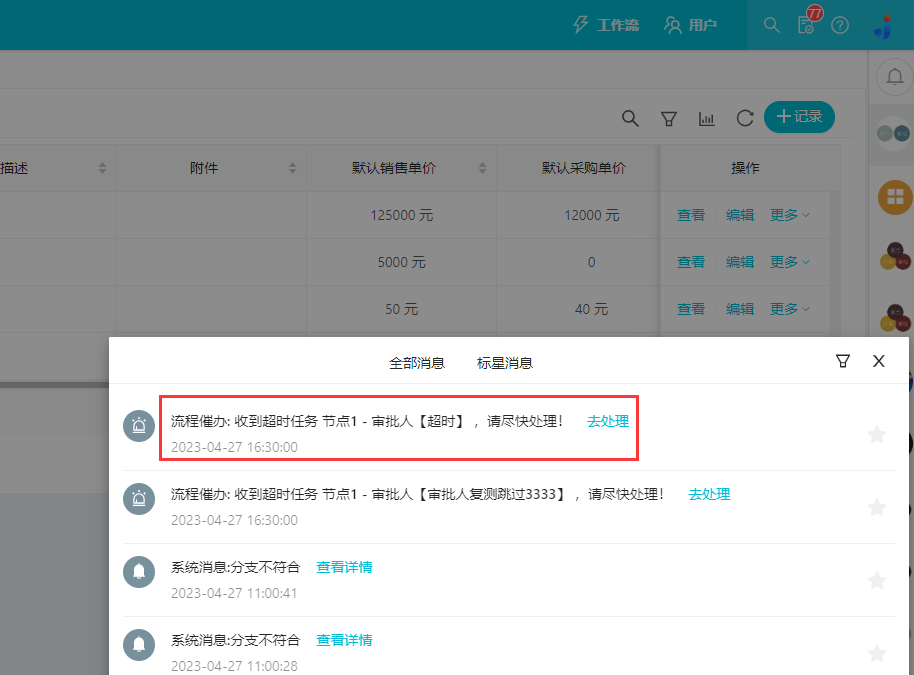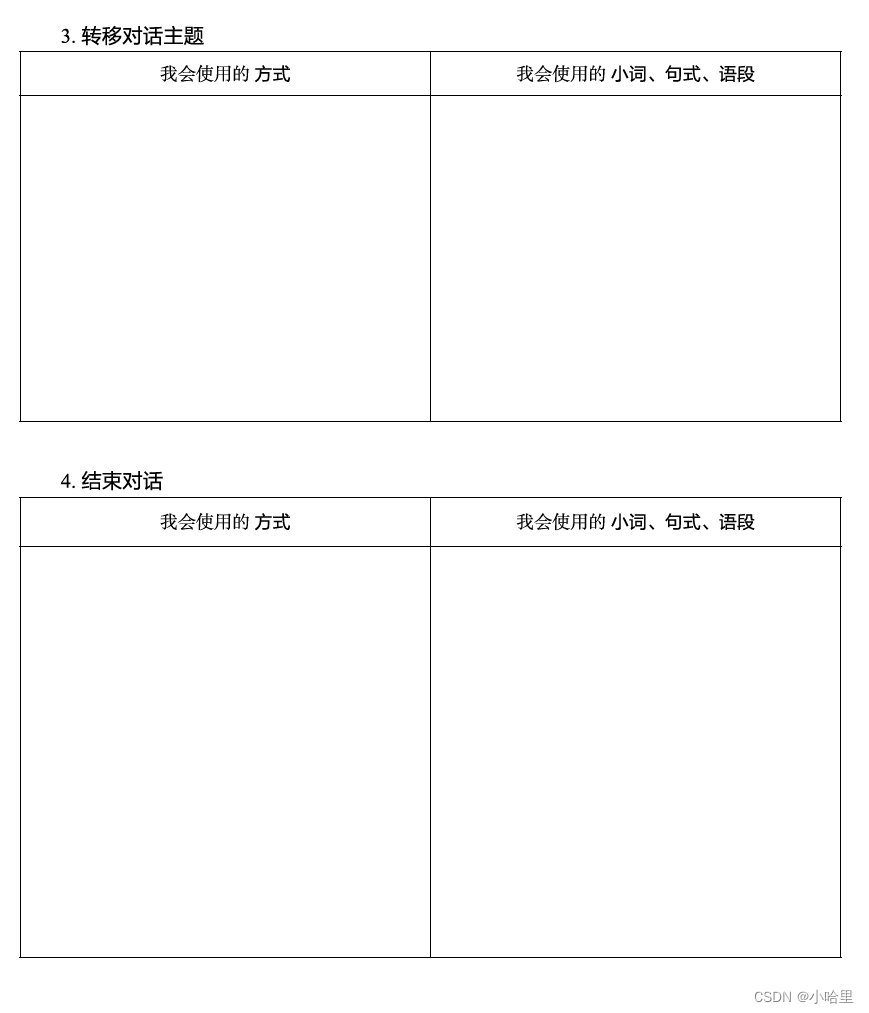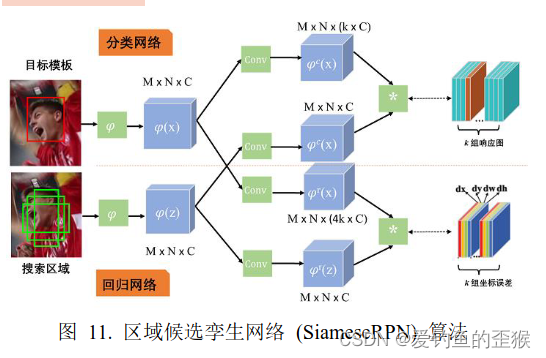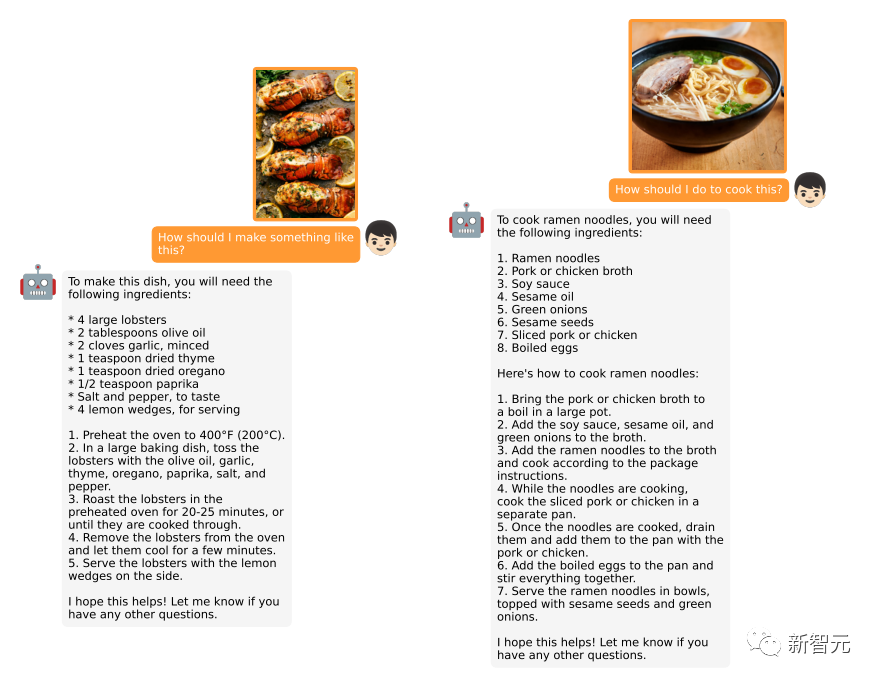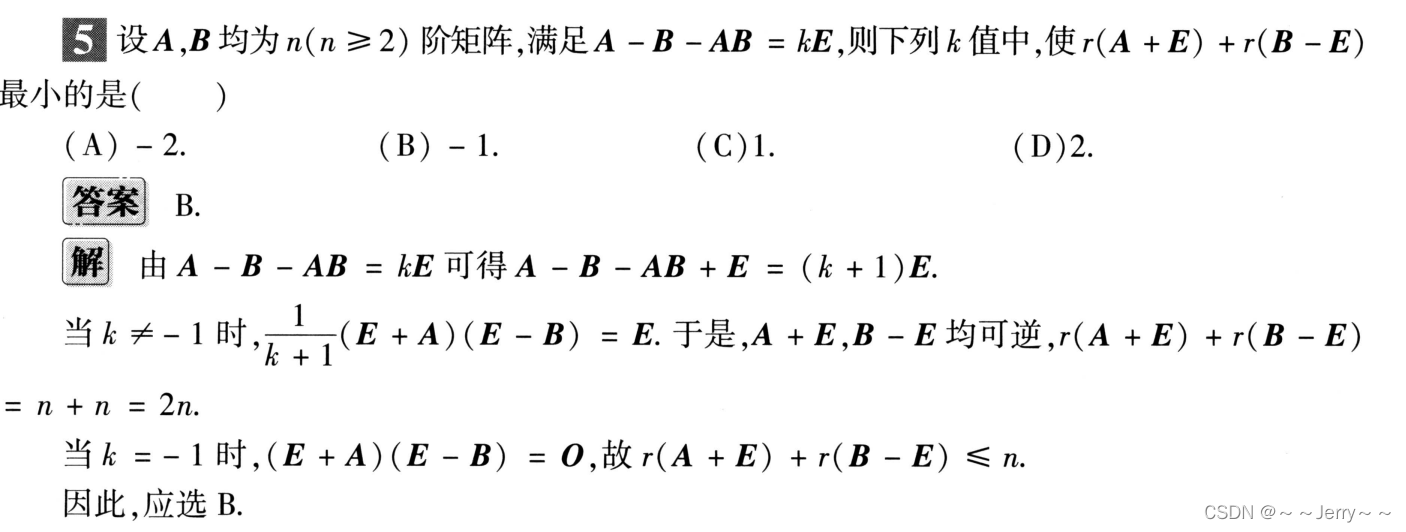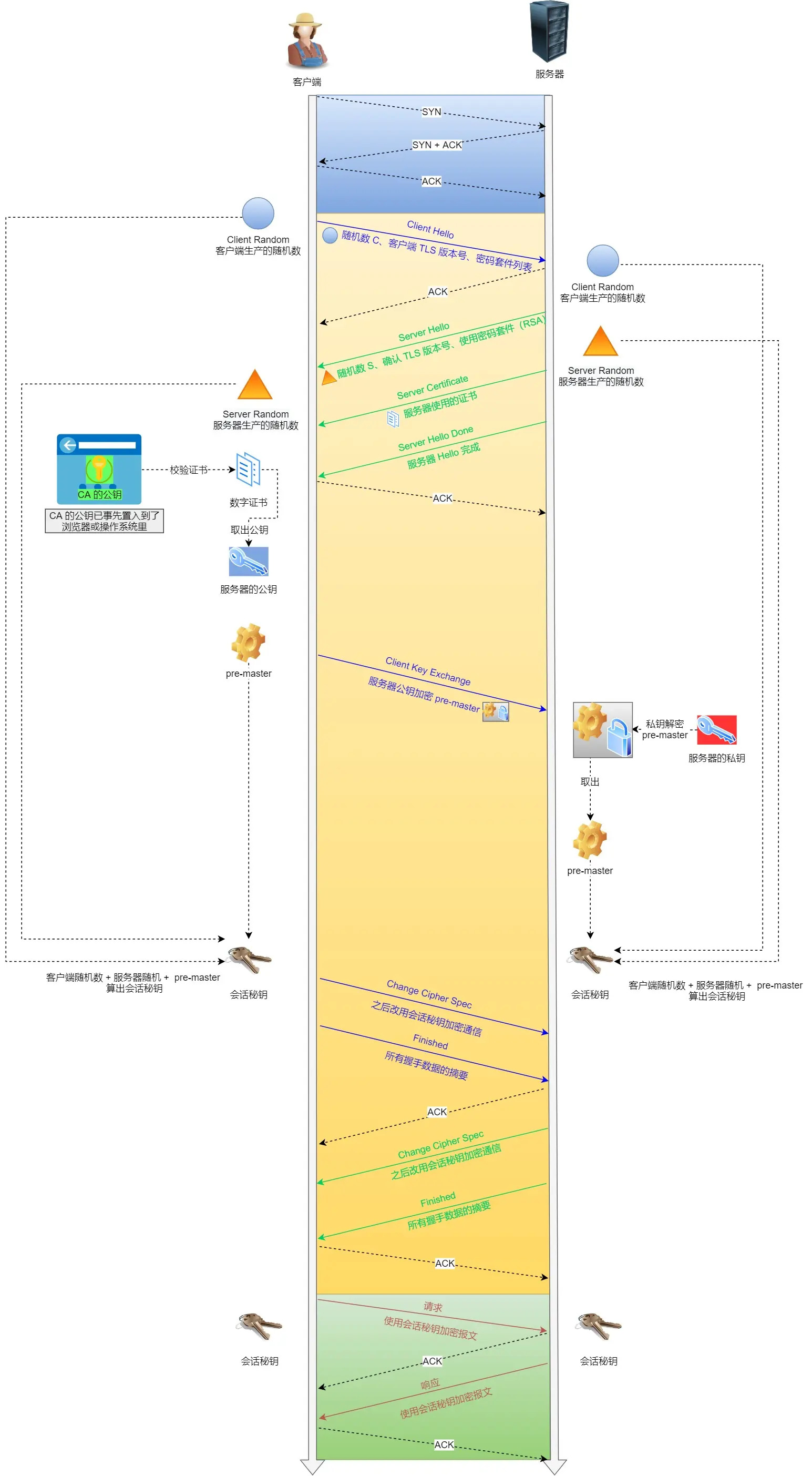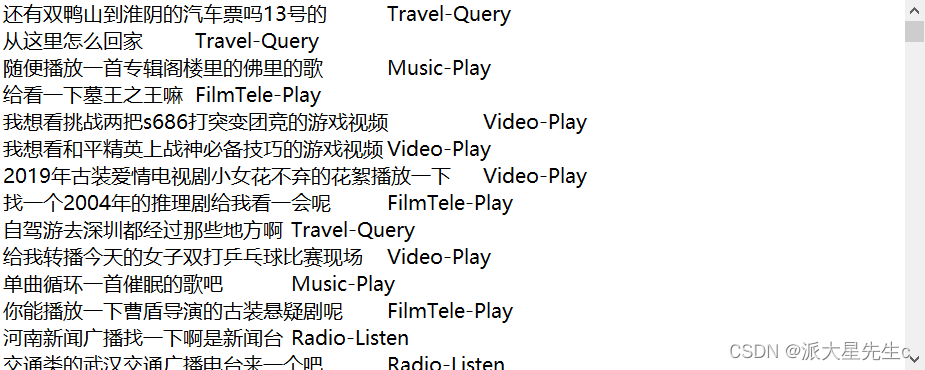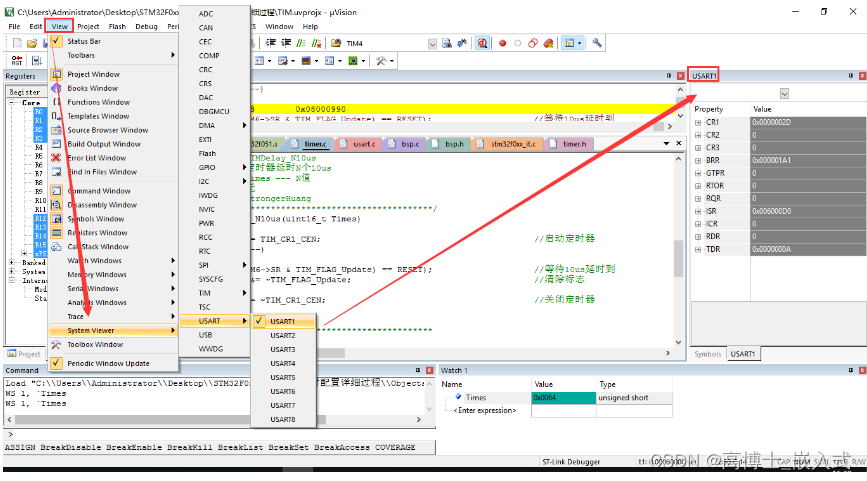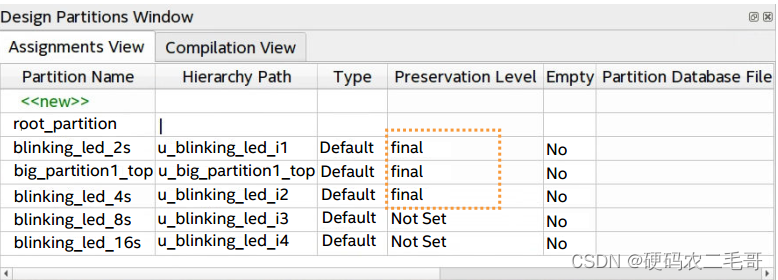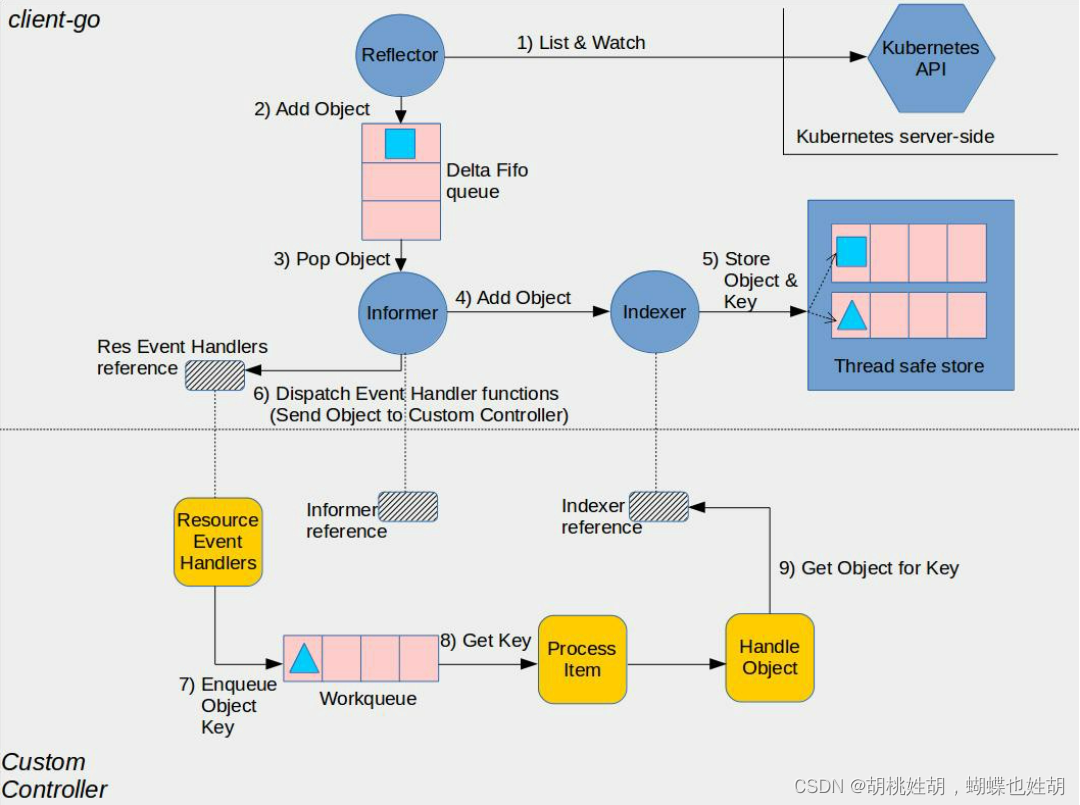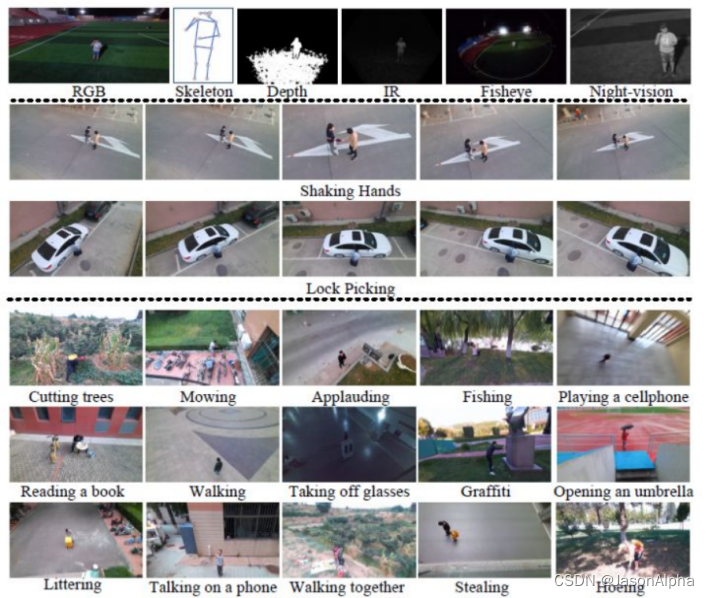本笔记内容为尚硅谷谷粒商城CompletableFuture异步编排部分
目录
一、线程回顾
1 、初始化线程的 4 种方式
2.、线程池的七大参数
运行流程:
3、常见的4种线程池
4、开发中为什么使用线程池
二、CompletableFuture 异步编排
业务场景
1、创建异步对象
2、计算完成时回调方法
3、handle 方法
4、线程串行化方法
5、两任务组合 - 都要完成
6、两任务组合 - 一个完成
7、多任务组合
示例代码
一、线程回顾
1 、初始化线程的 4 种方式
1)、继承 Thread
2)、实现 Runnable 接口
3)、实现 Callable 接口 + FutureTask (可以拿到返回结果,可以处理异常)
4)、线程池
1.继承 Thread
/*
* 1)、继承Thread
* Thread01 thread = new Thread01();
* thread.start();//启动线程
*/
public static class Thread01 extends Thread{
@Override
public void run() {
System.out.println("当前线程:"+Thread.currentThread().getId());
int i = 10 / 2;
System.out.println("运行结果:"+i);
}
}
2.实现 Runnable 接口
/*
* 2)、实现Runnable接口
* Runable01 runable01 = new Runable01();
* new Thread(runable01).start();
*/
public static class Runable01 implements Runnable{
@Override
public void run() {
System.out.println("当前线程:"+Thread.currentThread().getId());
int i = 10 / 2;
System.out.println("运行结果:"+i);
}
}
3.实现 Callable 接口 + FutureTask (可以拿到返回结果,可以处理异常)
/*
* 3)、实现Callable接口 + FutureTask (可以拿到返回结果,可以处理异常)
* FutureTask<Integer> futureTask = new FutureTask<>(new Callable01());
* new Thread(futureTask).start();
* //阻塞等待整个线程执行完成,获取返回结果
* Integer integer = futureTask.get();
*/
public static class Callable01 implements Callable<Integer>{
@Override
public Integer call() throws Exception {
System.out.println("当前线程:"+Thread.currentThread().getId());
int i = 10 / 2;
System.out.println("运行结果:"+i);
return i;
}
}
4.线程池
方式 1 和方式 2:主进程无法获取线程的运算结果。不适合当前场景
方式 3:主进程可以获取线程的运算结果,但是不利于控制服务器中的线程资源。可以导致服务器资源耗尽。
方式 4:通过如下两种方式初始化线程池
通过线程池性能稳定,也可以获取执行结果,并捕获异常。但是,在业务复杂情况下,一个异步调用可能会依赖于另一个异步调用的执行结果。
Executors.newFiexedThreadPool(3);
//或者
new ThreadPoolExecutor(corePoolSize, maximumPoolSize, keepAliveTime, TimeUnit unit, workQueue, threadFactory, handler);
2.、线程池的七大参数
* @param corePoolSize the number of threads to keep in the pool, even* if they are idle, unless {@code allowCoreThreadTimeOut} isset 池中一直保持的线程的数量,即使线程空闲。除非设置了 allowCoreThreadTimeOut
* @param maximumPoolSize the maximum number of threads to allow inthe* pool 池中允许的最大的线程数
* @param keepAliveTime when the number of threads is greater than* the core, this is the maximumtime that excess idle threads* will wait for new tasks before terminating. 当线程数大于核心线程数的时候,线程在最大多长时间没有接到新任务就会终止释放,最终线程池维持在 corePoolSize 大小
* @param unit the time unit for the {@code keepAliveTime} argument时间单位
* @param workQueue the queue to use for holding tasks before theyare* executed. This queue will hold only the {@code Runnable}* tasks submitted by the {@code execute} method. 阻塞队列,用来存储等待执行的任务,如果当前对线程的需求超过了corePoolSize大小,就会放在这里等待空闲线程执行。
* @param threadFactory the factory to use when the executor creates a new thread创建线程的工厂,比如指定线程名等
* @param handler the handler to use when execution is blocked because the thread bounds and queue capacities are reached拒绝策略,如果线程满了,线程池就会使用拒绝策略。
//我们以后再业务代码里面,以上三种启动线程的方式都不用。【将所有的多线程异步任务都交给线程池执行】
/*
4)、线程池[ExecutorService]
* 给线程池直接提交任务。
* service.execute(new Runable01());
* 1、创建:
* 1)、Executors
* 2)、new ThreadPoolExecutor
Future:可以获取到异步结果
*
* 区别:
* 1、2不能得到返回值。3可以获取返回值
* 1、2、3都不能控制资源
* 4可以控制资源,性能稳定。
*/
//当前系统中池只有一两个,每个异步任务,提交给线程池让他自己去执行就行
/**
* 七大参数
* corePoolSize:[5] 核心线程数[一直存在除非(allowCoreThreadTimeOut)]; 线程池,创建好以后就准备就绪的线程数量,就等待来接受异步任务去执行。
* 5个 Thread thread = new Thread(); thread.start();
* maximumPoolSize:[200] 最大线程数量; 控制资源
* keepAliveTime: 存活时间。如果当前的线程数量大于 core 数量。
* 释放空闲的线程(maximumPoolSize-corePoolSize)。只要线程空闲大于指定的keepAliveTime;
* unit:时间单位
* BlockingQueue<Runnable> workQueue:阻塞队列。如果任务有很多,就会将目前多的任务放在队列里面。只要有线程空闲,就会去队列里面取出新的任务继续执行。
* threadFactory:线程的创建工厂。
* RejectedExecutionHandler handler:如果队列满了,按照我们指定的拒绝策略拒绝执行任务
*/
运行流程:
1、线程池创建,准备好 core 数量的核心线程,准备接受任务
2、新的任务进来,用 core 准备好的空闲线程执行。
(1) 、core 满了,就将再进来的任务放入阻塞队列中。空闲的 core 就会自己去阻塞队
列获取任务执行
(2) 、阻塞队列满了,就直接开新线程执行,最大只能开到 max 指定的数量
(3) 、max 都执行好了。Max-core 数量空闲的线程会在 keepAliveTime 指定的时间后自
动销毁。最终保持到 core 大小
(4) 、如果线程数开到了 max 的数量,还有新任务进来,就会使用 reject 指定的拒绝策
略进行处理
3、所有的线程创建都是由指定的 factory 创建的。
面试:
一个线程池 core 7; max 20 ,queue:50,100 并发进来怎么分配的?
先有 7 个能直接得到执行,接下来 50 个进入队列排队,在多开 13 个继续执行。现在 70 个
被安排上了。剩下 30 个默认拒绝策略。
3、常见的4种线程池
①newCachedThreadPool
创建一个可缓存线程池,如果线程池长度超过处理需要,可灵活回收空闲线程,若无可回收,则新建线程。
②newFixedThreadPool
创建一个定长线程池,可控制线程最大并发数,超出的线程会在队列中等待。
③newScheduledThreadPool
创建一个定长线程池,支持定时及周期性任务执行。
④newSingleThreadExecutor
创建一个单线程化的线程池,它只会用唯一的工作线程来执行任务,保证所有任务按照指定顺序(FIFO, LIFO, 优先级)执行。
4、开发中为什么使用线程池
- 降低资源的消耗
- 通过重复利用已经创建好的线程降低线程的创建和销毁带来的损耗
- 提高响应速度
- 因为线程池中的线程数没有超过线程池的最大上限时,有的线程处于等待分配任务的状态,当任务来时无需创建新的线程就能执行
- 提高线程的可管理性
- 线程池会根据当前系统特点对池内的线程进行优化处理,减少创建和销毁线程带来的系统开销。无限的创建和销毁线程不仅消耗系统资源,还降低系统的稳定性,使用线程池进行统一分配
二、CompletableFuture 异步编排
业务场景
查询商品详情页的逻辑比较复杂,有些数据还需要远程调用,必然需要花费更多的时间。假如商品详情页的每个查询,需要如下标注的时间才能完成。

那么,用户需要 5.5s 后才能看到商品详情页的内容。很显然是不能接受的。如果有多个线程同时完成这 6 步操作,也许只需要 1.5s 即可完成响应。Future 是 Java 5 添加的类,用来描述一个异步计算的结果。你可以使用isDone方法检查计 算是否完成,或者使用get阻塞住调用线程,直到计算完成返回结果,你也可以使用cancel 方法停止任务的执行。
虽然Future以及相关使用方法提供了异步执行任务的能力,但是对于结果的获取却是很不方便,只能通过阻塞或者轮询的方式得到任务的结果。阻塞的方式显然和我们的异步编程的初衷相违背,轮询的方式又会耗费无谓的 CPU 资源,而且也不能及时地得到计算结果,为什么不能用观察者设计模式当计算结果完成及时通知监听者呢?
很多语言,比如 Node.js,采用回调的方式实现异步编程。Java 的一些框架,比如Netty,自己扩展了 Java 的 Future接口,提供了addListener等多个扩展方法;Google guava 也提供了通用的扩展 Future;Scala 也提供了简单易用且功能强大的 Future/Promise 异步编程模式。
作为正统的 Java 类库,是不是应该做点什么,加强一下自身库的功能呢?
在 Java 8 中, 新增加了一个包含 50 个方法左右的类: CompletableFuture,提供了非常强大的Future 的扩展功能,可以帮助我们简化异步编程的复杂性,提供了函数式编程的能力,可以通过回调的方式处理计算结果,并且提供了转换和组合 CompletableFuture 的方法。CompletableFuture 类实现了 Future 接口,所以你还是可以像以前一样通过get方法阻塞或者轮询的方式获得结果,但是这种方式不推荐使用。
CompletableFuture 和 FutureTask 同属于 Future 接口的实现类,都可以获取线程的执行结果。

1、创建异步对象
CompletableFuture 提供了四个静态方法来创建一个异步操作。

1.runXxxx 都是没有返回结果的,supplyXxx 都是可以获取返回结果的
2.可以传入自定义的线程池,否则就用默认的线程池
2、计算完成时回调方法

1.whenComplete 可以处理正常和异常的计算结果,exceptionally 处理异常情况。
2.whenComplete 和 whenCompleteAsync 的区别:
whenComplete:是执行当前任务的线程执行继续执行 whenComplete 的任务。
whenCompleteAsync:是执行把 whenCompleteAsync 这个任务继续提交给线程池来进行执行。
3.方法不以 Async 结尾,意味着 Action 使用相同的线程执行,而 Async 可能会使用其他线程执行(如果是使用相同的线程池,也可能会被同一个线程选中执行)
public class CompletableFutureDemo {
public static void main(String[] args) throws ExecutionException, InterruptedException {
CompletableFuture future = CompletableFuture.supplyAsync(new Supplier<Object>() {
@Override
public Object get() {
System.out.println(Thread.currentThread().getName() + "\tcompletableFuture");
int i = 10 / 0;
return 1024;
}
}).whenComplete(new BiConsumer<Object, Throwable>() {
@Override
public void accept(Object o, Throwable throwable) {
System.out.println("-------o=" + o.toString());
System.out.println("-------throwable=" + throwable);
}
}).exceptionally(new Function<Throwable, Object>() {
@Override
public Object apply(Throwable throwable) {
System.out.println("throwable=" + throwable);
return 6666;
}
});
System.out.println(future.get());
}
}
3、handle 方法

和 complete 一样,可对结果做最后的处理 (可处理异常),可改变返回值。
4、线程串行化方法

1.thenApply 方法:当一个线程依赖另一个线程时,获取上一个任务返回的结果,并返回当前
任务的返回值。
2.thenAccept 方法:消费处理结果。接收任务的处理结果,并消费处理,无返回结果。
3.thenRun 方法:只要上面的任务执行完成,就开始执行 thenRun,只是处理完任务后,执行。
4.thenRun 的后续操作带有 Async 默认是异步执行的。同之前。
5.以上都要前置任务成功完成。
Function<? super T,? extends U>
T:上一个任务返回结果的类型
U:当前任务的返回值类型
5、两任务组合 - 都要完成


两个任务必须都完成,触发该任务。
- thenCombine:组合两个 future,获取两个 future 的返回结果,并返回当前任务的返回值。
- thenAcceptBoth:组合两个 future,获取两个 future 任务的返回结果,然后处理任务,没有返回值。
- runAfterBoth:组合两个 future,不需要获取 future 的结果,只需两个 future 处理完任务后,处理该任务。
6、两任务组合 - 一个完成
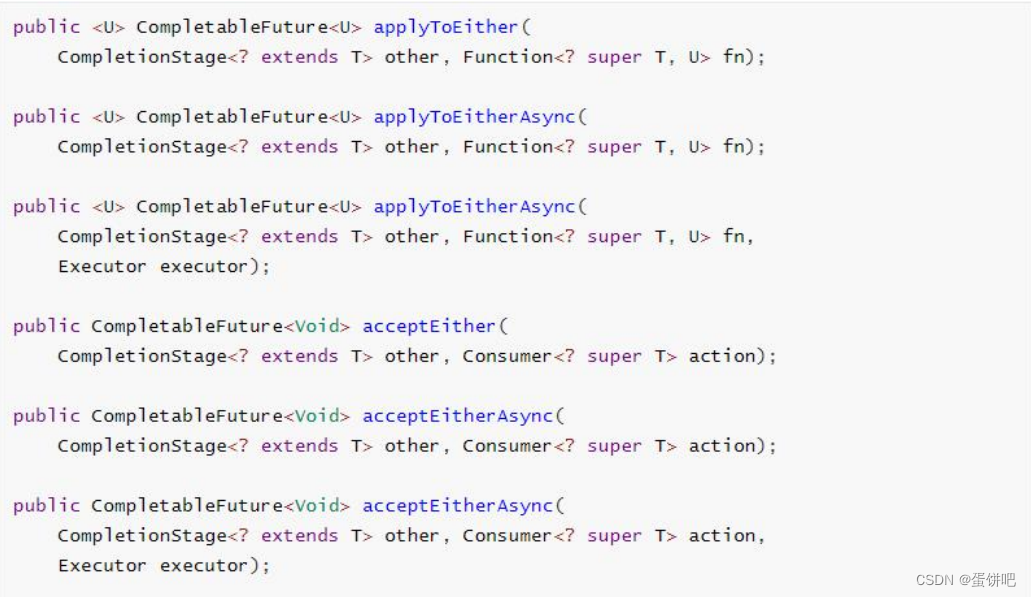

当两个任务中,任意一个 future 任务完成的时候,执行任务。
- applyToEither:两个任务有一个执行完成,获取它的返回值,处理任务并有新的返回值。
- acceptEither:两个任务有一个执行完成,获取它的返回值,处理任务,没有新的返回值。
- runAfterEither:两个任务有一个执行完成,不需要获取 future 的结果,处理任务,也没有返回值。
7、多任务组合

allOf:等待所有任务完成
anyOf:只要有一个任务完成
示例代码
package com.fancy.gulimall.search.thread;
import java.util.concurrent.*;
public class ThreadTest {
public static ExecutorService executor = Executors.newFixedThreadPool(10);
public static void main(String[] args) throws ExecutionException, InterruptedException {
System.out.println("main....start....");
// CompletableFuture<Void> future = CompletableFuture.runAsync(() -> {
// System.out.println("当前线程:" + Thread.currentThread().getId());
// int i = 10 / 2;
// System.out.println("运行结果:" + i);
// }, executor);
/**
* 方法完成后的感知
*
*/
// CompletableFuture<Integer> future = CompletableFuture.supplyAsync(() -> {
// System.out.println("当前线程:" + Thread.currentThread().getId());
// int i = 10 / 0;
// System.out.println("运行结果:" + i);
// return i;
// }, executor).whenComplete((res,excption)->{
// //虽然能得到异常信息,但是没法修改返回数据。
// System.out.println("异步任务成功完成了...结果是:"+res+";异常是:"+excption);
// }).exceptionally(throwable -> {
// //可以感知异常,同时返回默认值
// return 10;
// });
/**
* 方法执行完成后的处理
*/
// CompletableFuture<Integer> future = CompletableFuture.supplyAsync(() -> {
// System.out.println("当前线程:" + Thread.currentThread().getId());
// int i = 10 / 4;
// System.out.println("运行结果:" + i);
// return i;
// }, executor).handle((res, thr) -> {
// if (res != null) {
// return res * 2;
// }
// if (thr != null) {
// return 0;
// }
// return 0;
// });
//R apply(T t, U u);
/**
* 线程串行化
* 1)、thenRun:不能获取到上一步的执行结果,无返回值
* .thenRunAsync(() -> {
* System.out.println("任务2启动了...");
* }, executor);
* 2)、thenAcceptAsync;能接受上一步结果,但是无返回值
* 3)、thenApplyAsync:;能接受上一步结果,有返回值
*/
// CompletableFuture<String> future = CompletableFuture.supplyAsync(() -> {
// System.out.println("当前线程:" + Thread.currentThread().getId());
// int i = 10 / 4;
// System.out.println("运行结果:" + i);
// return i;
// }, executor).thenApplyAsync(res -> {
// System.out.println("任务2启动了..." + res);
//
// return "Hello " + res;
// }, executor);
//void accept(T t);
//R apply(T t);
//future.get()
/**
* 两个都完成
*/
// CompletableFuture<Object> future01 = CompletableFuture.supplyAsync(() -> {
// System.out.println("任务1线程:" + Thread.currentThread().getId());
// int i = 10 / 4;
// System.out.println("任务1结束:" );
// return i;
// }, executor);
//
// CompletableFuture<Object> future02 = CompletableFuture.supplyAsync(() -> {
// System.out.println("任务2线程:" + Thread.currentThread().getId());
//
// try {
// Thread.sleep(3000);
// System.out.println("任务2结束:" );
// } catch (InterruptedException e) {
// e.printStackTrace();
// }
// return "Hello";
// }, executor);
// future01.runAfterBothAsync(future02,()->{
// System.out.println("任务3开始...");
// }, executor);
// void accept(T t, U u);
// future01.thenAcceptBothAsync(future02,(f1,f2)->{
// System.out.println("任务3开始...之前的结果:"+f1+"--》"+f2);
// }, executor);
//R apply(T t, U u);
// CompletableFuture<String> future = future01.thenCombineAsync(future02, (f1, f2) -> {
// return f1 + ":" + f2 + " -> Haha";
// }, executor);
/**
* 两个任务,只要有一个完成,我们就执行任务3
* runAfterEitherAsync:不感知结果,自己没有返回值
* acceptEitherAsync:感知结果,自己没有返回值
* applyToEitherAsync:感知结果,自己有返回值
*/
// future01.runAfterEitherAsync(future02,()->{
// System.out.println("任务3开始...之前的结果:");
// },executor);
//void accept(T t);
// future01.acceptEitherAsync(future02,(res)->{
// System.out.println("任务3开始...之前的结果:"+res);
// },executor);
// CompletableFuture<String> future = future01.applyToEitherAsync(future02, res -> {
// System.out.println("任务3开始...之前的结果:" + res);
// return res.toString() + "->哈哈";
// }, executor);
CompletableFuture<String> futureImg = CompletableFuture.supplyAsync(() -> {
System.out.println("查询商品的图片信息");
return "hello.jpg";
},executor);
CompletableFuture<String> futureAttr = CompletableFuture.supplyAsync(() -> {
System.out.println("查询商品的属性");
return "黑色+256G";
},executor);
CompletableFuture<String> futureDesc = CompletableFuture.supplyAsync(() -> {
try {
Thread.sleep(3000);
System.out.println("查询商品介绍");
} catch (InterruptedException e) {
e.printStackTrace();
}
return "华为";
},executor);
// CompletableFuture<Void> allOf = CompletableFuture.allOf(futureImg, futureAttr, futureDesc);
CompletableFuture<Object> anyOf = CompletableFuture.anyOf(futureImg, futureAttr, futureDesc);
anyOf.get();//等待所有结果完成
// System.out.println("main....end...."+futureImg.get()+"=>"+futureAttr.get()+"=>"+futureDesc.get());
System.out.println("main....end...."+anyOf.get());
}
}
结束!
